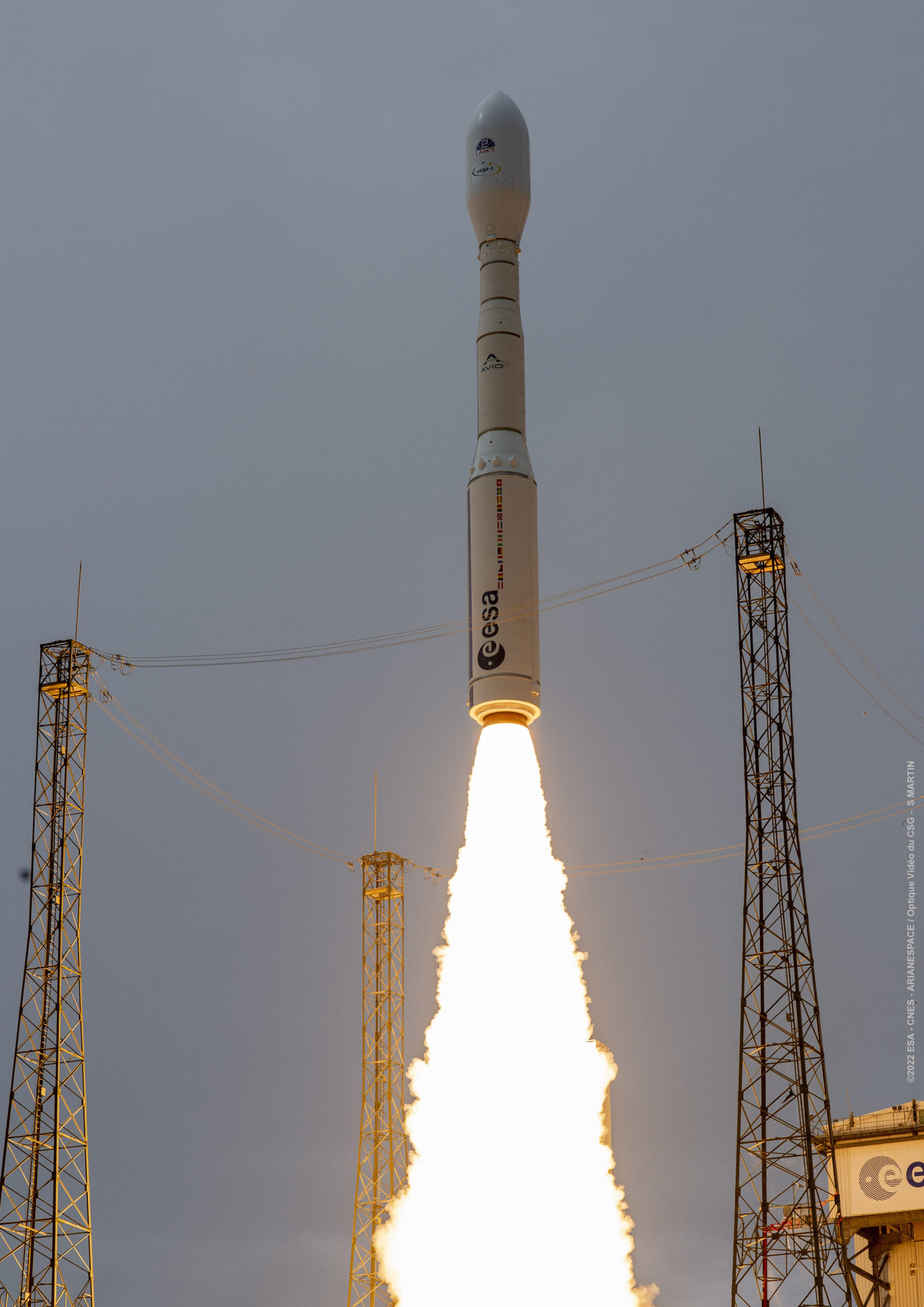Latest News

Vega-C’s inaugural flight on July 13. Photo: ESA
On Wednesday, the European Space Agency (ESA) executed a successful first launch of the Vega C, which it says will expand launch access and flexibility. Arianespace is now preparing to start commercial service with the rocket, and said it has a backlog of seven launches and 10 auxiliary payloads.
The debut launch took place on Wednesday at 10:13 a.m. local time in Kourou, French Guiana. The primary payload, LARES-2 is a scientific mission for the Italian space agency ASI. The mission also carried six research cubesats from France, Italy, and Slovenia as secondary payloads. The mission lasted about 2 hours and 15 minutes from liftoff to release of the final payload.
Vega-C is the result of collaboration between Europe’s space industry. ESA manages the program, working with prime contractor Avio, which designed and manufactured the rocket. Now that Vega-C has launched, Arianespace will become its launch service provider.
“Today we open a new era of European launch solutions, starting with Vega-C and to be complemented by Ariane 6,” ESA Director of Space Transportation Daniel Neuenschwander said.
Vega C is an enhanced version of the Vega lightweight vehicle, which has flown since 2012. ESA called the new rocket a “significant improvement in launch system flexibility.” Vega-C can orbit larger satellites, two main payloads or rideshare missions. The rocket is upgraded with more powerful first and second stage solid rocket motors, the first of which is shared with the Ariane 6. It also has a larger fairing to increase payload mass and double allowable volume. The accommodations give Vega-C about 800 kg more payload performance than Vega. Vega-C is able to to launch larger radar Sentinel 1C satellites in the Copernicus program, which were previously flown on Soyuz.
At 35 meters tall, it is designed to carry up to 2,200 kg to Sun-Synchronous Orbit at 700 km. The rocket has been in development since 2014 and was previously expected to join the fleet in 2019.
“Vega C, with its increased capabilities and versatility, already allowed Arianespace to capture many important customers; we are confident this is only the beginning of a true success story,” said Stéphane Israël, CEO of Arianespace. “Its configuration, based on our customers’ needs, has been designed in alignment with our upcoming heavy launcher, Ariane 6. This is a first step towards the full renewal of our product range, which will allow us to honor our motto: any mass, any orbit, anytime.”
Arianespace said the Vega-C backlog includes Sentinel-1C that will be launched for ESA on behalf of the European Commission; FLEX and ALTIUS, two ESA programs; CSG 3 for the Italian Space Agency (ASI) and Italian Ministry of Defence; PLATiNO 2 for ASI; and Microcarb for the French Space Agency CNES.
Commercial missions include 4 Pléiades Néo satellites for Airbus Defence and Space; KOMPSAT 7 for KARI, the Korean Aerospace Research Institute; Theos-2 for the Geo-Informatics and Space Technology Development Agency of Thailand; and Formosat-7R for Taiwan.
The first commercial launch of Vega C is scheduled in November 2022. The flight will deliver Airbus Earth observation satellites Pléiades Neo 5 and 6.
ESA is also developing another variant, Vega-E, with a cryogenic upper stage, planned for 2026. Avio recently completed its first hot-fire test series of the rocket.
Get the latest Via Satellite news!
Subscribe Now